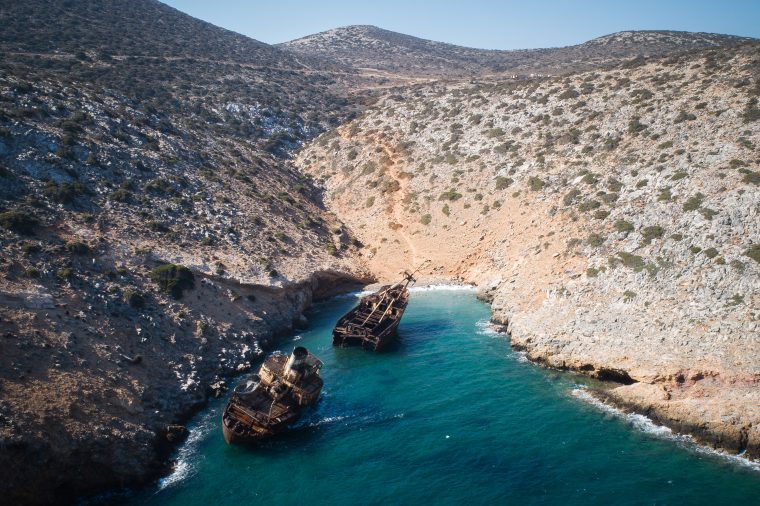The Sole Nun of Amorgos Built a Paradise

It’s been 35 years since the woman who is now Sister Irini first came to Amorgos, the easternmost Greek island the Cyclades chain, a dry and craggy place that has a year-round population of around 2,000 people, a place she fell in love with when she was a young mother.
That’s a different life now, far behind her as she said after her husband died she decided to stay on and build an oasis of a garden from an abandoned monastery, the attractions that lure visitors from around the world to the tiny dot in the Aegean.
Her life was profiled by Terri Steel for The National Geographic, depicting the solitary sense being the only nun on an island where there are other monasteries but where hers stands out for its lusheness in a dry atmosphere.
Seven years ago, Sister Irini – she won’t talk about who she was – began transforming a long-abandoned monastery into an oasis. Visitors come throughout the year to walk her bountiful garden lined with Byzantine frescos, to hear her story, and to purchase her magnificent paintings of religious icons, the report said.
She lives the simple life of a nun, cloaked in black, tending the garden that has become a tourist attraction, welcoming visitors and talking of her life of faith.
“Last names don’t exist as a nun.” Sister Irini said. “I had to divorce myself from my brothers and sisters. I waited until my children were independent.”
Sister Irini moved to Amorgos and took her vows as a Greek Orthodox nun in 2011. She spends her days gardening, painting, and praying, but always welcomes visitors to her monastery, Agios Georgios Valsamitis (or St. George Valsamitis).
“It was empty and alone, and I had to work hard to make it paradise,” she says. “It really is paradise!”
To get to it you trek up a hill on dusty roads, trying to avoid wandering goats. The monastery sits upon an ancient well, previously a water oracle where 17th-century water readers foretold believers’ futures through the blessings of St. George but the Church disapproves of that so a Bishop had the well cemented shut in 1967.
But the 30 fruit trees that Sister Irini lovingly planted are still taking from the spring and have provided protective boughs of oranges, lemons, apricots, peaches, and olives and cats lounge amid beds of flowers. “The cats were sick,” said Sister Irini, “but I brought in doctors and now they’re happy.”
Life on Amorgos can be idyllic if you don’t want many modern amenities, including cash because the two ATM machines are often empty and residents barter among themselves for food and goods.
Everything in Amorgos moves slower, but it’s worth the wait, wrote Steel. “Rich coffee brews in copper pots on heated sand. Piping hot baskets of sardines are served with feta cheese—crispy, salted, or chilled—alongside morning-picked tomatoes and olives with warm baked bread.”
Sister Irini has an almost solitary life of faith but she said besides the visitors and talking to other residents that, “Every Saturday the priests come and share eggs and we hug and talk,” says Sister Irini. “It’s one of my favorite things.”
(Source: The National Herald)
H αναδημοσίευση του παραπάνω άρθρου ή μέρους του επιτρέπεται μόνο αν αναφέρεται ως πηγή το ORTHODOXIANEWSAGENCY.GR με ενεργό σύνδεσμο στην εν λόγω καταχώρηση.
Ακολούθησε το ORTHODOXIANEWSAGENCY.gr στο Google News και μάθε πρώτος όλες τις ειδήσεις.


















